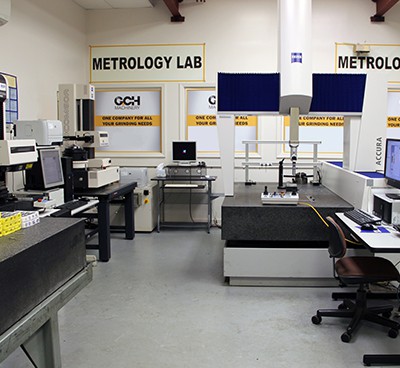

This blog will help clarify the critical difference between precision vs. accuracy in grinding, diagnose common quality problems, and provide solutions like grinder retrofitting so you can maintain tighter tolerances and improve the ROI of your production.
Precision vs. Accuracy in Grinding
Failing to achieve the right balance of precision and accuracy in grinding processes can have tangible business consequences. Here’s how precision and accuracy differ from each other.What Is Precision?
Precision refers to how consistently you can replicate dimensions or measurements. Whether or not these values hit the target is irrelevant; the point is that the results are closely grouped, even if they’re off the mark.Picture yourself throwing darts at a dartboard. Precision is hitting the same part of the board every time—even if it’s not the bullseye.
Precision in grinding ensures parts within the same batch have minimal variation. It focuses on maintaining consistent surface finishes across all parts and producing parts with the same dimensions, even if slightly off tolerance.
Grinder precision leads to predictable process control and reduced part-to-part variability, both of which improve overall repeatability in production. A high-precision grinding process underpins efficiency in automated and high-volume environments.
What Is Accuracy?
Accuracy measures how close a result is to its intended or “true” value. Going back to the dartboard analogy, accuracy is hitting the bullseye—even if your shots are spread out.Accuracy ensures parts meet specified tolerances. For example, achieving dimensional targets consistently and maintaining critical tolerances in high-performance parts like aerospace components.
Grinder accuracy impacts part fit, assembly, and functional performance, ensuring the final product operates as intended. If dimensions are off-target or tolerances are not met, your parts will fail to function correctly in broader assemblies.
Which One Is Ideal?
The gold standard in grinding quality is achieving both precision and accuracy simultaneously. Think of it as scoring several darts directly in the bullseye time after time. Together, they ensure consistent quality, minimal rework, and optimal functionality for parts in assembly or application.Diagnosing Grinding Quality Issues
Struggling to tell if your operation suffers more from low precision or poor accuracy? Look for these telltale signs:Signs of Low Precision
- Outputs vary significantly from part to part.
- Surface finishes are inconsistent (poor grinding consistency)
- Issues emerge with repeatability over production runs.
Signs of Poor Accuracy
- A high percentage of out-of-tolerance parts lead to rejections.
- Dimensions are consistently off-target.
- Obtaining required certifications becomes a challenge.
How Grinder Retrofitting Solves Precision and Accuracy Gaps
For many manufacturers, old or outdated grinding equipment is the key roadblock preventing both precision and accuracy. This is where centerless grinder retrofitting comes in. Grinder retrofitting breathes new life into your machinery by upgrading it with modern technology for higher performance. Here are some of the benefits of grinder retrofitting:- Upgrading CNC control systems boosts automation and enables more precise adjustment capabilities.
- Servo motor enhancements provide micro-level movement control, leading to improved positional accuracy.
- Advanced smart sensors and alignment tools maintain optimal machine calibration for tighter tolerances.
- Modernized spindle systems minimize runout, directly contributing to better dimensional accuracy.
- In-process gauging technologies support real-time part monitoring, helping reduce measurement variability.
How Better Grinding Quality Improves ROI
- Investing in better grinding quality translates into measurable financial benefits:
- Reduced scrap and rework lowers material and labor costs.
- Higher output quality builds trust with customers and improves repeat business.
- Capability for tighter tolerances allows you to bid on premium contracts.
- Automation enhancements reduce dependency on skilled labor.
Why GCH Machinery Is Your Perfect Retrofitting Partner
When it comes to grinder retrofitting and rebuilding, here’s why businesses trust GCH Machinery:- Decades of experience in grinder retrofits and turnkey solutions.
- Access to OEM parts ensures compatibility and high-quality upgrades.
- Expertise in integrating automation and CNC upgrades for modern efficiency.
- Support for legacy machines, letting you maximize your existing investment.
Solve Your Grinding Challenges Today
Precision and accuracy are the backbone of manufacturing success. Misunderstanding their differences can lead to avoidable delays, higher costs, and quality risks. Fortunately, grinder retrofitting offers a proven solution for addressing these challenges in a cost-effective way.Whether you need a simple upgrade or a complete rebuild, GCH Machinery is ready to help you achieve your grinding quality goals. Request a Quote today to discuss your needs and unlock higher ROIs with better grinding quality.
*Required fields
*Required fields
*Required fields
*Required fields
*Required fields
*Required fields
*Required fields
*Required fields
